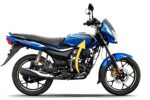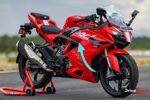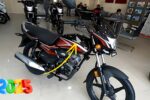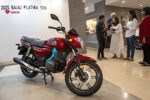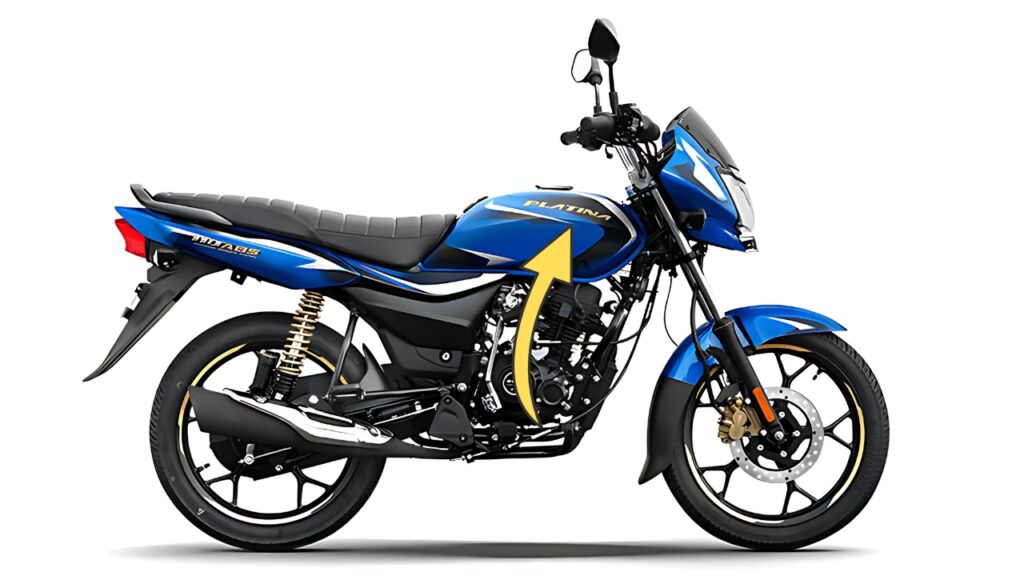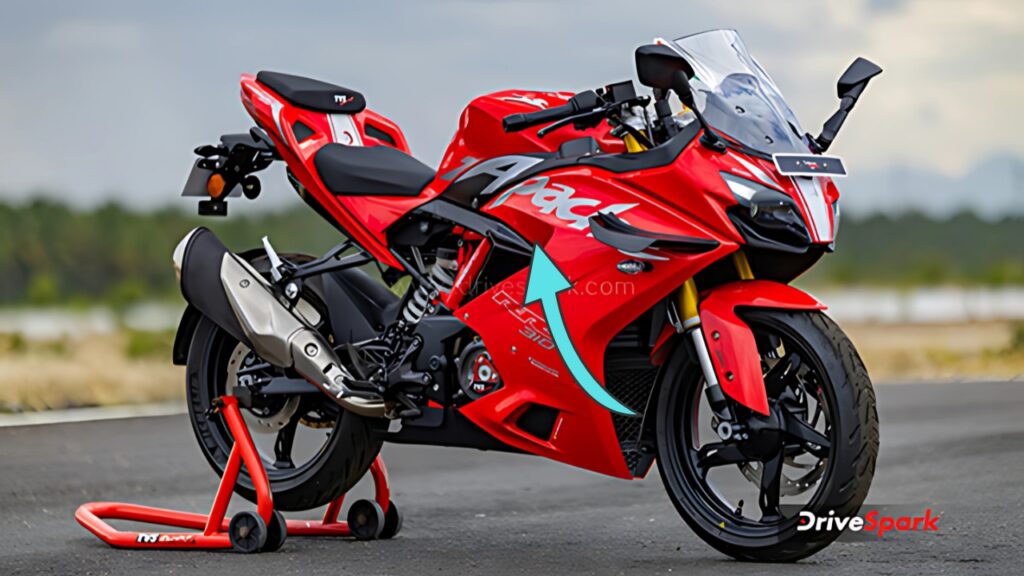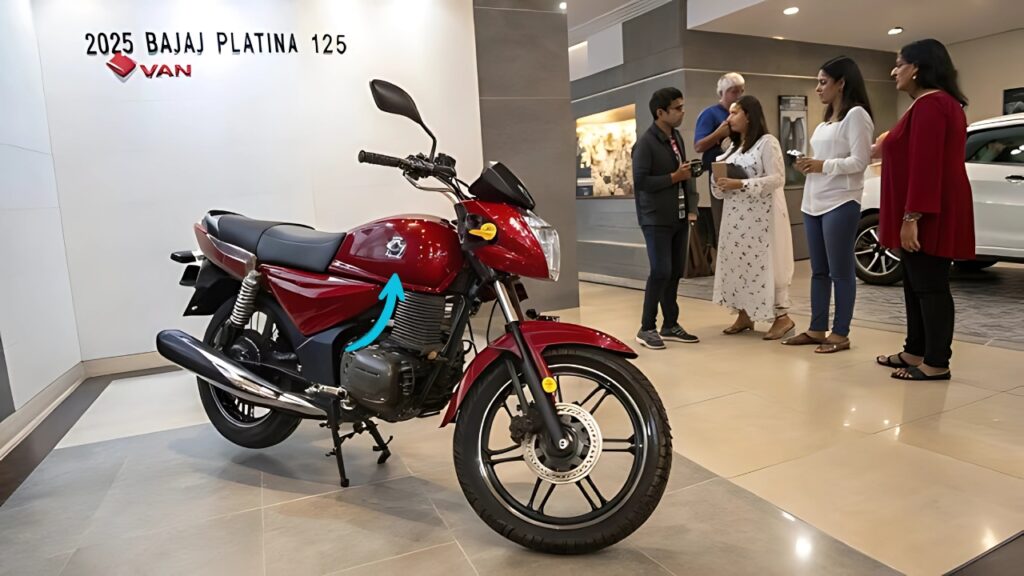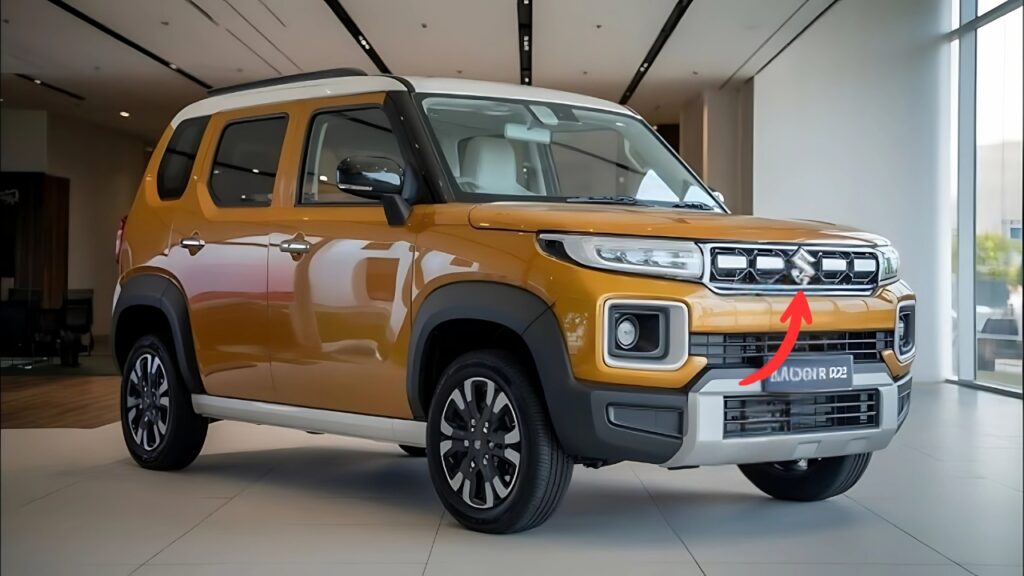Hero HF Deluxe : The humble commuter motorcycle segment in India has experienced a transformation in the last handful of years, morphing from its barebones utilitarian offerings to machines that balance practicality with style and features.
One motorcycle that has quietly led the charge is the Hero HF Deluxe — it’s a model that has completely changed expectations in its niche, all while staying true to the base affordability and efficiency that shaped its beginnings.
The new best-selling model comes with major visual and feature upgrades, but retains its famous fuel economy – qualities that have made it the bike of choice for millions of urban and rural commuters alike.
Table of Contents
Hero HF Deluxe A Journey Through Design: From Basic to Bold
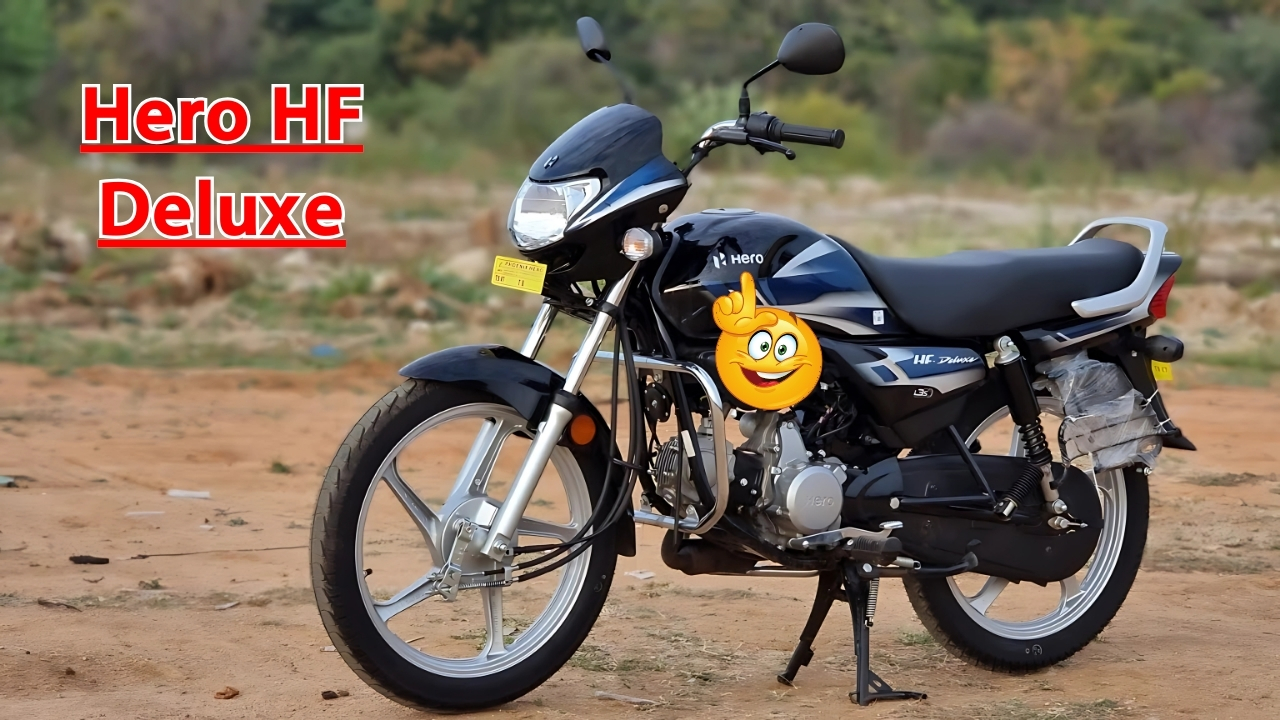
Now, the updated Hero HF Deluxe has received its most significant design overhaul ever as the model has evolved from its conservative appeal, to sportier lineage in looks.
Up front, the profile has been given a huge facelift, with an all-new headlamp assembly boasting new sharp angular housing with LED daytime running lights, a segment-first premium touch.
This lighting signature gives the motorcycle a distinctive road presence both night and day, and brings the visual imagery of the motorcycle up a notch beyond typical entry-level bisect.
On the sides, the panels feature more pronounced sculpting with crisper character lines that take the place of the subtler contours.
New graphics packages on these panels are offered in six color combinations, with eye-catching Nexus Blue and Heavy Grey with Candy Blazing Red options boasting gradient effects and a subtle metallic finish—visual aesthetics more commonly found on more expensive models.
“The design philosophy has been to create legitimate pride of ownership without taking away from making this motorcycle accessible,” explains Suresh Kumar, a dealer principal and the man on the ground who has seen commuter preferences change over the past 20 years.
“Most customers in this segment are first-time motorcycle buyers, and the improved aesthetics help develop a more emotional connection to the product beyond just transportation utility.
The seat also gets meaningful aesthetic and functional updates, with improved contouring and a dual-texture cover for better grip while riding in varied conditions.
Seat height stays a reasonable 805mm, so riders with various physical statures can hop on and off – important for a motorcycle with such broad demographic reach.
The pillion experience gets better courtesy the new grab rails that are slightly longer and feature a more ergonomic cross-section for the user’s grip.
The wheels range from simple spoke patterns through to complex designs where offered with two-tone black and silver finishing on alloy wheel options, but conventional spoked fixing also remain on the books for those who want maximum strength and rural serviceability.
These refinements are only slight but subtly effective in refining the visual presence of the motorcycle without scaring off its core audience — and also those who like it for being as understatedly reliable as a Ford Transit van.
Hero HF Deluxe Performance Tuning: Where Cost Meets Improvement
Under all that familiar closed bodywork, the HF Deluxe uses the same air-cooled, single-cylinder engine design that’s successfully propelled so many Hero models with minimal changes to the earlier iteration, expression changing include more efficient design and a pointer in action.
The engine develops 8.36 PS at 8000 rpm and 8.05 Nm of torque at 6000 rpm – not huge numbers on paper but in a tuning philosophy that emphasizes low-end and mid-range tractability that better suits real-world Indian riding conditions.
Outstanding fuel economy of 70–80 kmpl (in standard test conditions) is possible through a better-combustion chamber design along with a more advanced fueling process.
The fuel economy in the real-world generally hovers about 65-75 kmpl depending on riding conditions, the weight you’re carrying, and the maintenance you’ve performed – that equates to over 450 kilometers out of a full 9.6-liter fuel tank in typical use.
“The efficiency is not just a marketing exercise, it is a rigorously designed priority,” says motorcycle technology analyst Vikram Sharma.
“Hero has consistently evolved the combustion process and reduced mechanical losses without sticking in complex technology that would harm reliability or increase maintenance requirements.”
Transmission continues to be a traditional 4-speed constant mesh setup, with gear ratios optimized for urban commuter dynamics, providing plenty of low-on power while keeping the engine on song as you cruise at 60-70 km/h, at which speeds the diffuser still offers effective vacuum to stabilize the rear end in gusty conditions, and refinement at those speeds is ably dealt with by an improved shifter mechanism and refined tooth profiles that minimize notchiness – it’s small stuff, but makes a marked improvement to everyday driveability.
Vibration control – one of the more difficult tendencies for economy-oriented singles to overcome – benefits from even more holistic attention to detail, with both uprated internal deveor and relationship isolation mounting between contact points.
It’s not completely vibration-free at higher revs, but rider comfort is kept at a good level within normal operating range, reducing fatigue over long runs.
Hero HF Deluxe Practical Innovation: Functional Integration
While HF Deluxe is close to heart of the denim high-performance segment, HF Deluxe is also sensible add-ons for riders, which understand contemporary rider needs while ensure a simplistic approach to operation.
The instrument cluster progresses from a simple analog layout to a more informative semi-digital unit that uses the traditional analog speedometer together with a digital readout to display necessary information including fuel level, odometer and service reminders.
Increased smartphone integration is as simple as a USB charging socket discreetly integrated into the headlamp cowl, reflecting the fundamental necessity, regardless of how much money you may or may not have to your name, that we now have a smartphone attached to us at all times. This feature is a valuable addition for younger riders who depend on accessibility all the time for maps, and communication, among other things.
Storage needs are not forgotten, either, as the pair of scooter-style panels is given a small but functional utility compartment tucked into the treatment of the side panel that allows secure space for documents and small things really need to be carted – fixed method to the worst pain-point of commuter motorcycle users who often resort to makeshift storage.
The lockable fuel cap comes holistically integrated into the tank design while ensuring the required safety.
“Such pragmatic additions indicate awareness of changing rider needs beyond transportation in motion,” remarks consumer-behavior researcher Priya Mehta.
“Modern-day entry-level motorcycle buyers expect some very basic conveniences irrespective of price point, and Hero has arrived at a list of most important integrations without overloading the product with complexity.”
Hero HF Deluxe Ride Quality and Handling: Primarily Comfortable, Not Necessarily Limitless
In the strict confines of an economy-sensitive lightweight bike, the HF Deluxe turns in remarkable ride quality improvements via a handful of well-targeted tweaks.
The suspension uses traditional telescopic front forks and twin rear shock absorbers with fetching new damping rates, delivering improved absorption of minor road defects while retaining control during more performance based obstacles.
The riding posture is balanced enough that it allows a comfortable level of control, which means seat, footpegs, and handlebar position give the rider comfort for riding all day all, but without undue fatigue.
The handlebar angle and width receive the even more subtle adjustments, thanks to ergonomic studies of average Indian rider physiology, allowing for a more natural wrist angle during prolonged operation.
Brakes come as traditional drum brake settings where the optional front disc brake is available for selected variants. Both systems also come with CBS (Combined Braking System) as required by safety legislation, which ensures an appropriately balanced distribution of braking force irrespective of operator input patterns – a very good point for less experienced riders.
Wheel and tire specs are standard too with 18 incher front and rear sets, offering the best balance between impact absorption and handling precision suited for most Indian road conditions.
The 80/100 tire profiles provide adequate grip and low rolling resistance for efficient driving also on multiple surfaces and even dusty roads [especially for the IONIQ 6, which is less suited for off-road use].
Hero HF Deluxe Something More Than the Product: Ownership Experience
The HF Deluxe is just one part of Hero’s approach to motorcycle ownership, which also includes a full ecosystem created to cater the needs of its wide-ranging clientele.
With over 6,000 touchpoints nationwide, its service network achieves unprecedented penetration, meaning that maintenance and support are accessible no matter the location – a key consideration for rural customers with possibly limited alternative transportation options.
The maintenance schedule aligns with practical ownership realities, with 3,000 km service intervals and simple procedures to slash downtime and cost.
Standardized specifications are used where possible in consumable components to ensure parts availability, even when services might not be immediately available in remote locations.
“The service infrastructure that backs this motorcycle is as crucial as its technical specifications,” says Rahul Verma, who specializes in the rural market.
“For a lot of customers, and especially in non-urban areas, accessibility of regular maintenance significantly affects the purchase decision beyond just the upfront price.”
Such digital support channels serve to complement an existing physical infrastructure, by providing streamlined service booking apps and voice-assisted troubleshooting in regional languages – reflecting the heterogeneous linguistic landscape of the Indian market and differing degrees of technological familiarity among the customer base.
Priced between Rs. 57,000 to Rs. 62,000 (ex-showroom) for the variant and location, the HF Deluxe is one of the numerous models in Hero’s diverse lineup.
This puts it above rock-bottom entry-level products, but still well-positioned for the enormous middle of the commuter market that wants some quality, features and economy.
The value proposition is only partly in the sticker price, however; the motorcycle’s economy figures yield operating costs around 35-40% lower than similar small-displacement scooters and 15-20% below competitive bikes in its class.
That efficiency results in real long-term ownership benefits, especially for customers who rack up a lot of miles each day.
“The mathematics of ownership makes this motorcycle very interesting for delivery services and working professionals who travel 50-80 km daily,” says Alok Gupta, a transportation economist.
“Inherent economies in the way they operate provide a rapid return on the initial productivity cost, and a very favourable total cost of ownership for the customer which isn’t always obvious from showroom pricing.”
In the latest HF Deluxe, this sense of utility at a reasonable outlay, underpinned by substantial design and feature upgrades, will remain the rocket relationship that will allow it to spiritedly maintain its incredible presence in Indian two-wheeler market – a banter between basic transit and soon to be defined visual-acoustic demands of more and more differentiated end user groups that comprise our vast expanse of economic strata.
